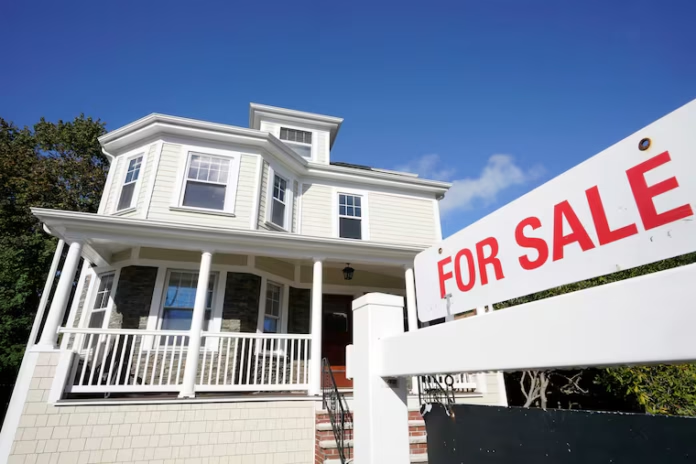By Agencies
The average rate for a 30-year mortgage in the U.S. climbed this week to 6.89%, marking its highest point since early February. This increase further raises borrowing costs for homebuyers.
According to mortgage buyer Freddie Mac, the rate rose from 6.86% last week. A year ago, it averaged 7.03%.
Additionally, the average rate for 15-year fixed-rate mortgages, often favored by homeowners refinancing, increased to 6.03% from 6.01%. This is still lower than the 6.36% average from a year ago.
Mortgage rates are affected by various factors, including the Federal Reserve’s interest rate policies and bond market investor expectations regarding the economy and inflation.
The 10-year Treasury yield serves as a key indicator for lenders when pricing home loans.
Recently, bond yields have risen, driven by investors’ concerns over the ever-changing tariffs under the Trump administration and worries about soaring federal debt.
The 10-year Treasury yield was at 4.43% during midday trading Thursday, down from 4.47% late Wednesday.
This year, the average 30-year mortgage rate has remained close to its high of just above 7%, reached in mid-January. Its lowest point occurred six weeks ago, when it briefly dipped to 6.62%.
After three consecutive weeks of increases, the average rate is now at its highest level since February 6, when it also averaged 6.89%.
High mortgage rates can add hundreds of dollars to monthly payments, reducing purchasing power for many potential homebuyers.
This trend has contributed to a slump in the U.S. housing market that began in 2022 as rates climbed from pandemic lows. Last year, sales of previously occupied homes fell to their lowest level in nearly 30 years, with April’s sales reaching the slowest pace since 2009.
The rising mortgage rates have dampened sales during the typical peak season for home buying.
The Mortgage Bankers Association reported a 1.2% decline in mortgage applications last week, even as applications to purchase homes were up 18% from a year ago.
New data indicates that sales may slow further in the coming months. The National Association of Realtors reported a 6.3% drop in pending home sales last month compared to March, and a 2.5% decline from April of last year.
Pending home sales often serve as a leading indicator for future completed sales, with a lag of one to two months between contract signing and finalization.
“At this critical stage of the housing market, it is all about mortgage rates,” said Lawrence Yun, NAR’s chief economist. “Despite an increase in housing inventory, we are not seeing higher home sales. Lower mortgage rates are essential to bring home buyers back into the market.”
Economists anticipate that mortgage rates will remain volatile in the coming months, with forecasts suggesting the average rate for a 30-year mortgage could range between 6% and 7% this year.

